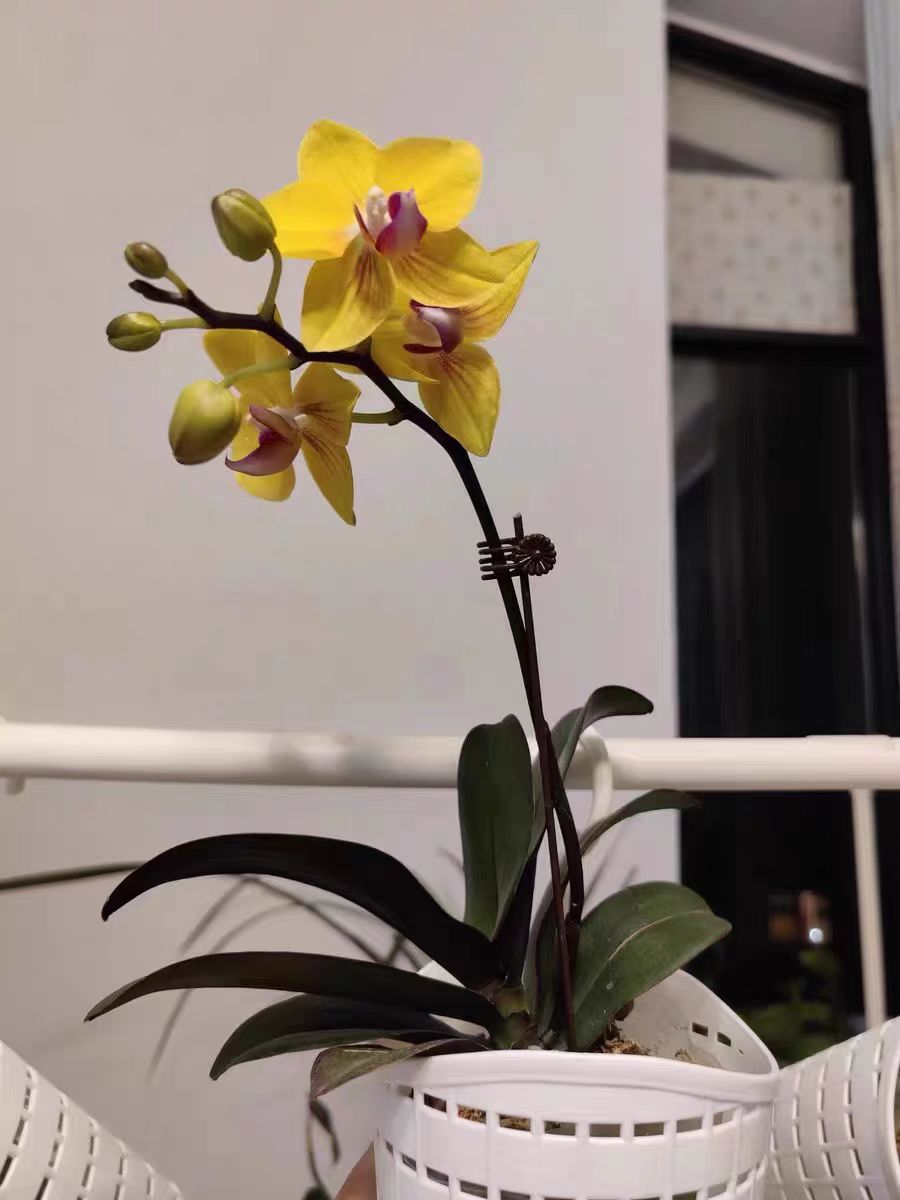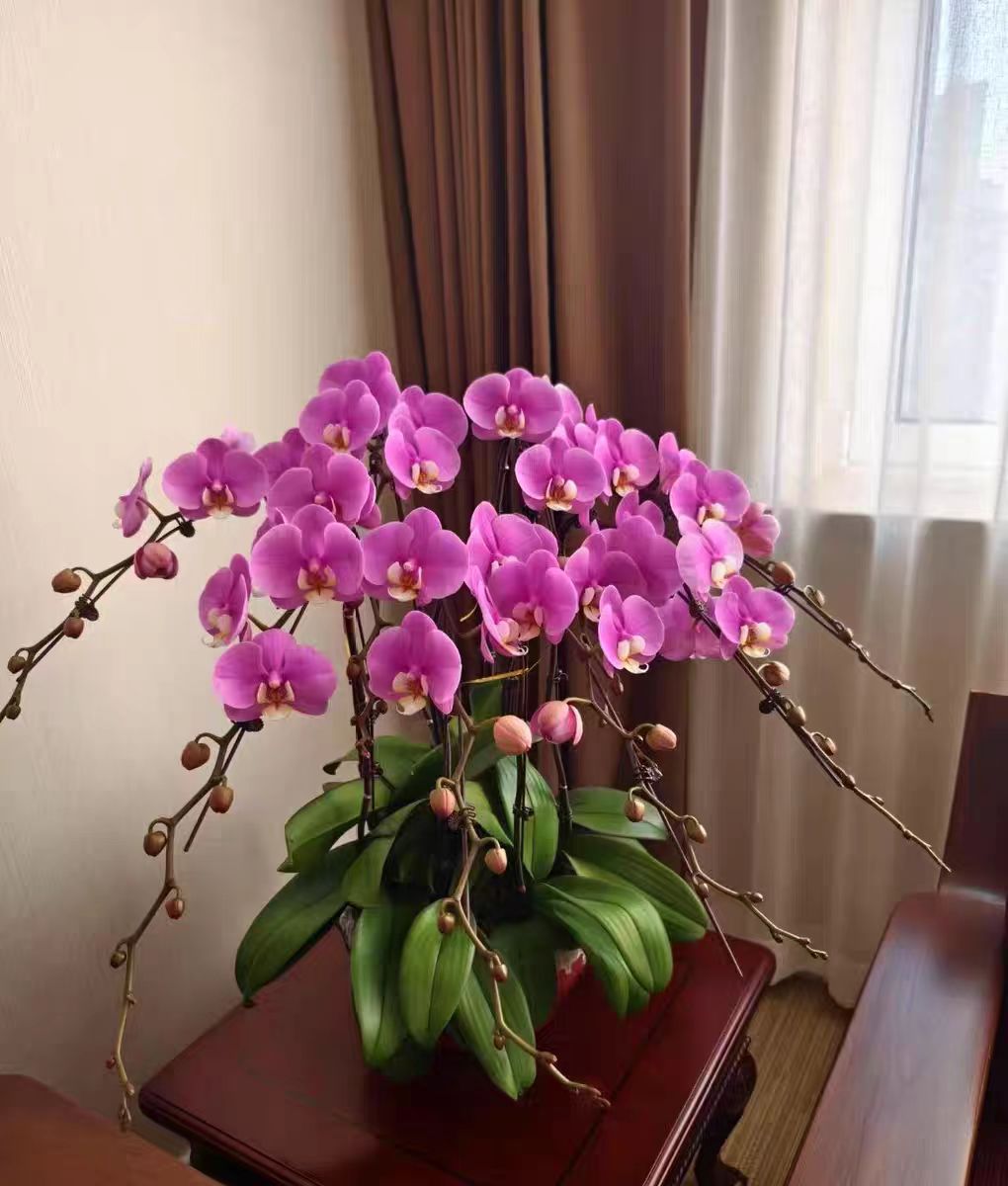After the flowers of a phalaenopsis orchid wither, many flower enthusiasts will face a question: Can my phalaenopsis orchid bloom again? And how can I make it rebloom?
To determine whether a phalaenopsis orchid can rebloom, you can mainly start from the following aspects:
Observe the plant's condition: A healthy phalaenopsis orchid plant has plump and glossy leaves, a well-developed root system, and no obvious diseases or pests. If the plant is in good condition, it is very likely to have the ability to rebloom.
Check the flower stem: After the flowering period of the phalaenopsis orchid ends, observe its flower stem. If the flower stem is still upright and there are signs of new buds sprouting at the bottom, it indicates that the plant still has strong vitality and may bloom again.
Analyze the growing environment: The growing environment of the phalaenopsis orchid also has a great impact on its reblooming ability. If the plant grows in an environment with sufficient light, good ventilation, and appropriate temperature and humidity, the probability of its reblooming will be greatly increased.
To make the phalaenopsis orchid rebloom, we need to start from multiple aspects such as pruning, repotting, watering, fertilizing, and lighting, and implement comprehensive measures.
Pruning:
Prune the faded flowers: After the flowers wither, promptly cut off the faded flowers 2-3 centimeters upward from the bottom of the flower stalk to prevent the continuous consumption of nutrients.
Prune the roots: In combination with repotting, check and prune off empty roots, rotten roots, and weak roots to promote the growth of new roots.
Repotting:
Select the planting medium: Phalaenopsis orchids prefer loose, fertile, and well-aerated planting media, such as decomposed pine bark, peanut shells, sphagnum moss, etc.
Repotting timing: It is best to repot after the flowering period to provide a new growing environment for the plant.
Repotting operation: Carefully remove the plant from the pot, gently shake off the excess soil, protect the roots well, and then replant it in the new planting medium.
Watering:
Follow the principle: Follow the watering principle of "water when the soil is dry and then let it dry out again", and avoid excessive drought or waterlogging in the potting soil.
Spray for humidity: In a dry growing environment, you can use a spray bottle to spray mist on the plant and its surroundings to maintain a high air humidity.
Fertilizing:
Fertilizer selection: Select special fertilizers for phalaenopsis orchids or fertilizers with a balanced ratio of nitrogen, phosphorus, and potassium.
Fertilizing frequency: Apply fertilizer once every 2-3 weeks until autumn. After autumn, phosphorus and potassium fertilizers can be supplemented to promote flower bud differentiation.
Lighting:
Ensure sufficient light: During the reblooming period of the phalaenopsis orchid, it requires sufficient light, but it should be protected from strong direct sunlight. It is best to place it indoors with scattered sunlight.
Adjust the position: Adjust the position of the plant according to seasonal changes. In spring, it can be placed by the window or on the balcony to receive scattered light; in summer, it needs to be moved to a cool and well-ventilated environment for cultivation.
By comprehensively applying the above measures, we can greatly increase the probability of the phalaenopsis orchid reblooming. Of course, the reblooming abilities of different phalaenopsis orchid varieties also vary, so adjustments still need to be made according to specific situations in actual operation.
How to Determine Whether a Phalaenopsis Orchid Can Rebloom?

Share with
Tagged in :



Leave a Reply